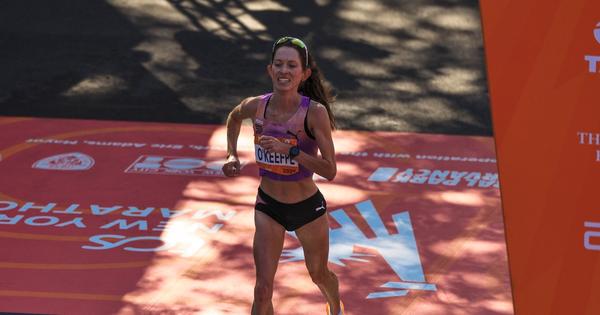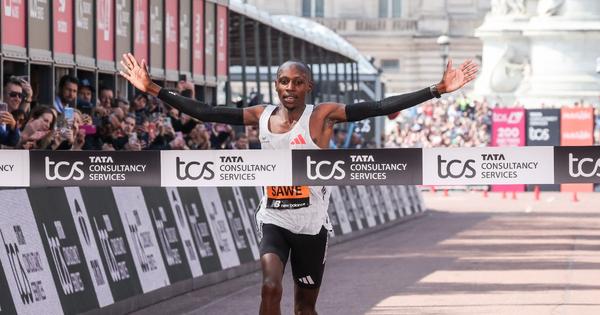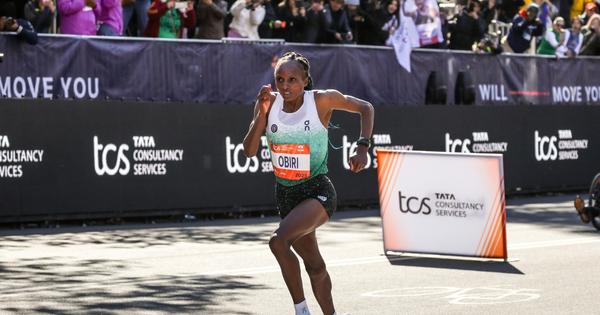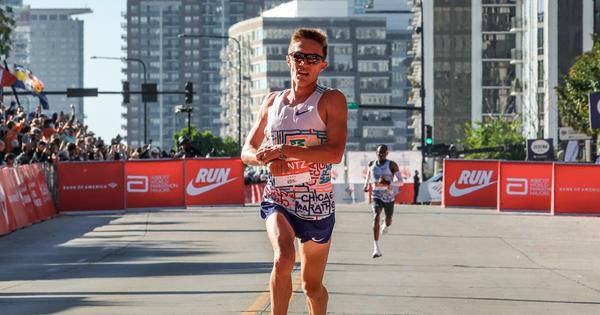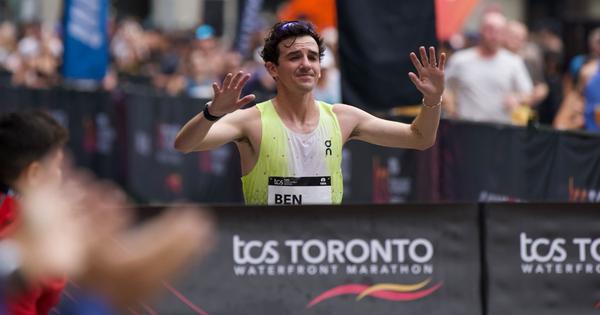By Paul Snyder
November 5, 2025
Think back to February of last year. Remember how stressed we were—by we, we of course mean a narrow subset of running geeks, exemplified by this newsletter’s writers and readership—over whether or not Team USA would be able to send three male marathoners to Paris?
It wasn’t that long ago! But nowadays, the state of American marathoning couldn’t feel more different, vibe-wise.
You can tell a ton about the prospects of a sporting entity by what its fans are focused on. Long-suffering supporters of “rebuilding” franchises tend to dwell on the future as a means of ignoring the unpleasant present. They aren’t celebrating current victories or touting star player achievements. No, it’s draft picks, theoretical trades, and developmental deep bench players that serve as the primary discussion fodder on Washington Wizards, Colorado Rockies, and New York Giants message boards.
The fact that we spent so much time focusing on who—if anyone—would be securing that third Olympic marathon berth for the U.S., digging deep into the rule book and attempting to learn how the Road to Paris spots were to be allocated, rather than waxing optimistic about Conner Mantz’s medal odds, suggests we weren’t in the best position as an event even last February.
Now, we’ve got our sights set slightly higher.
Obviously any discussion of America’s “we’re back” marathoning moment has to start with Mantz and his newly established national record, which came in a high finish at a World Major. But behind him we’ve got a whole lot more to be genuinely excited about.
In New York City alone, two American first-time marathoners landed in the top-ten: Charles Hicks (seventh in 2:09:59) and Joe Klecker (10th in 2:10:37). Fellow debutant Hillary Bor landed just outside the top-ten (12th in 2:10:47), right ahead of established 2:06 man Biya Simbassa. And we haven’t even gotten to Joel Reichow, who placed sixth (2:09:56)—his highest ever finish at a World Major.
Based solely on this past weekend’s results, it sure looks like we’ll be able to skip the whole “will so-and-so get to race in Los Angeles” line of discussion following the 2028 Olympic Marathon Trials.
That’s not even getting into the fact that Mantz’s right-hand man Clayton Young has placed ninth at the most recent World and Olympic marathons and seventh in New York (2024) and Boston (2025). There’s the fact that 26.2 riser Alex Maier and journeyman Daniel Mesfun have both quietly become 2:08 marathoners via their wins in Düsseldorf and Dublin, respectively. And fully acknowledging that a comprehensive list of other rock solid and likely still improving American male marathoners would be very boring to read, we’ll also name drop Wesley Kiptoo, Matthew Richtman, and Ryan Ford, then recognize that there’s bound to be even more dudes joining this resurgence who are still in the NCAA currently, or are in the process of changing allegiances to represent the U.S., like Zouhair Talbi.
The state of American women’s marathoning never hit quite the same nadir it did for the men once Galen Rupp began to slow down a touch, but we’re still in the midst of an exciting changing of the guard.
As already discussed, the top marathoners in the U.S. to close out 2025 are probably not the same runners you likely would have picked for that accolade to open the year. Susanna Sullivan, Jess McClain, and Annie Frisbee each firmly established themselves as top-10-types in big international races, which really means that on the right day, they could be podium threats if things shake out just right.
In New York City, Fiona O’Keeffe proved that her win in Orlando last year was no fluke, Emily Sisson (2:25:05 for eighth) chipped in yet another solid showing, Amanda Vestri’s debut (2:25:40 for ninth) went about as well as it possibly could have, and Elena Hayday notched a solid 12th-place finish.
But beyond this past weekend’s racing, very much still in the mix are names like Erika Kemp, who had one hell of a debut in Houston, and Natosha Rogers, who looks to have finally figured out how to race the distance. Dakotah Popehn has cemented herself as a steady top-10 presence on the international circuit, joining the likes of Emma Bates and Lindsay Flanagan in that archetype. Again, we’re risking becoming a list of names rather than a newsletter—but we want to drive the point home that there are simply a lot of very marathoners representing the U.S. right now, particularly those on the upswing of their careers!
For both the men and the women, there’s still a sizable chasm between the fastest American and the fastest in the world. Short of regular apocalyptic weather events throwing the results of future World Majors or global championship marathons into total disarray, a la 2018 Boston, it seems unlikely the next G.O.A.T. of the ‘thon is in possession of an American passport.
But it’s equally important to note the number of young, first- or second-time marathoners at the top of the rankings lists right now. It’d be one thing if Team USA’s best hope was that a 30-something with a dozen marathons under their belt suddenly made a huge jump… instead, there’s at least half a dozen men and women whose ceilings we haven’t begun to approach.
We’re still at an exciting moment for the event if you’re an American fan. There’s an increasing number of Team USA hopefuls with the upside potential to becoming true international class, and if that trajectory holds, it doesn’t feel completely insane to think there might be more than one American medalist in the marathon come L.A… a notion that would have been borderline laughable ahead of Paris.

Paul Snyder
Paul Snyder is the 2009 UIL District 26-5A boys 1600m runner-up. You can follow him on Bluesky @snuder.bsky.social.
